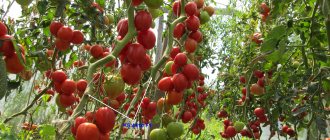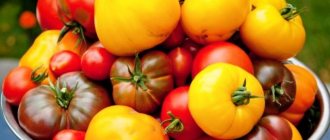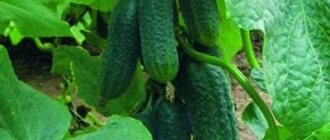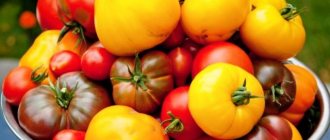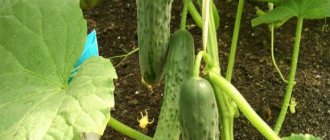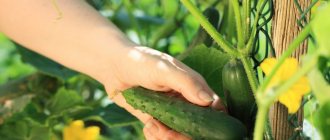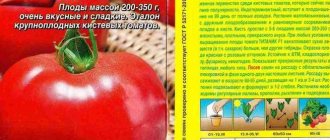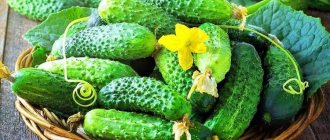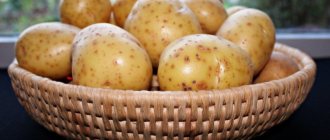- The best varieties of cucumbers for the greenhouse
- Bunch varieties of cucumbers for the greenhouse
- Self-pollinating varieties of cucumbers for greenhouses
- Cucumber varieties for polycarbonate greenhouses
- Yield varieties of cucumbers for greenhouses
- Early cucumber varieties for greenhouses
- Dutch varieties of cucumbers for greenhouses
- Cucumber varieties for winter greenhouses
- Resistant varieties of cucumbers for greenhouses
It would seem that growing cucumbers in a greenhouse would not be difficult even for a novice amateur. However, unlike cucumber varieties for open ground, in order to get a guaranteed harvest, you need to wisely select varieties specifically designed for cultivation in closed ground. Parthenocarpic and self-pollinating varieties that do not require pollinators make it possible to grow cucumbers in protected ground under any weather conditions. A special approach is needed when choosing varieties for polycarbonate and heated winter greenhouses.
Most modern varieties and hybrids of cucumbers have excellent taste, decent yield, and complex resistance to viral and fungal infections. For lovers of experiments and exotics, there is always a chance to try Dutch new products and proven varieties.
The best varieties of cucumbers for the greenhouse
Earning the title of best variety is not easy, because every gardener has his own favorites. First of all, the best variety never fails, has excellent fruit flavor and is the least hassle to care for.
Based on some reviews and personal experience, we can recommend the best varieties of cucumbers for greenhouses, such as
- Hercules (2002),
- Emelya (2002),
- Dynamite (2002),
- Athlete (2002).
- Real Colonel F1
Athlete
The first cucumbers ripen in less than 2 months and are good fresh and in salads. Pollinators are needed for good fruit set.
- An indeterminate plant with a mixed type of flowering, the bush grows actively.
- Zelentsy are large, cylindrical in shape, up to 20 cm long and up to 4.5 cm in diameter. The taste is rated excellent.
- The color is dark green with smeared stripes.
- The yield is impressive - up to 27.2 kg per 1 m².
The hybrid has a significant fruit weight - up to 180 g on nutritious soil. Not afraid of powdery mildew.
| Important To increase soil fertility on the site and grow organic food, biological products, for example, Ekomik Urozhainy, will help. Living microorganisms of the biological product contribute to the active decomposition of soil organic matter, the accumulation of nutrients and mobile forms of macro- and microelements. Plants are supplied with the necessary nutrients. The structure of soil biota is improved and accumulated phytopathogens are suppressed. The level of plant disease is reduced, growth and development are stimulated. The biological product starts the process of soil self-cleaning from residual pesticides. |
Photo: Biological product EKOMIK UROZHAYNIY for growing healthy and environmentally friendly products
Real Colonel F1 |
Popular parthenocarpic hybrid True Colonel F1 for spring greenhouses, tunnels, open ground. One of the most famous cucumbers of domestic selection.
Early ripening, female type of flowering, stands out for its friendly yield, simultaneous filling of a large number of fruits on the plant, and high yield of standard products.
- Branching is average or below average.
- The greens are beautifully bright green in color, lumpy, white-thorned, 12-15 cm long.
- The tubercles are large, the frequency of tubercles is average.
- The taste and pickling qualities deserve the highest praise.
- The purpose of the fruit is universal.
Resistant to olive spot, common cucumber mosaic virus, tolerant to powdery mildew, root rot.
Order seeds here
Review of the variety Real Colonel
This is a typical parthenocarpic, so you can forget about additional pollination. The plant is characterized by indeterminateness and medium branching. The flowers are mostly female, green flowers have a spindle shape and a short neck, they are slightly ribbed, green with moderately long stripes. The tubercles on the fruits are medium in size, sparse with white pubescence.
- The Real Colonel's greens usually weigh about 120 g, with a yield of about 13.5 kg per 1 m².
- Already 41 days after germination, you can get the first fruits.
- The length of the greens sometimes reaches 15 cm, the diameter often exceeds 4.5 cm.
The taste of both fresh and canned fruits is equally ideal.
Photo: productive parthenocarpic hybrid for a greenhouse Real Colonel F1
Hercules
Salad, bee-pollinated hybrid. After just 60 days you can get the first fruit harvest. It also has a significant fruit weight - from 150 to 170 g.
- The bush is indeterminate, grows and branches actively.
- Zelentsy have an interesting spindle-shaped shape, reach a length of 16-17 cm and a diameter of 4.0-4.5 cm. The taste is good.
- They are painted dark green with light stripes on the sides. Not very long and sparse tubercles with white pubescence are noticeable on the surface.
- Productivity is high - up to 28.8 kg per 1 m².
Not affected by viral and fungal infections (cucumber mosaic virus, olive spot virus, root rot).
The variety is also of the bunch type and is recommended for growing in heated greenhouses in the winter and spring.
Emelya
Parthenocarpic hybrid for salad purposes with excellent taste. The first harvests are produced quite early, on average 41 days after emergence.
- Zelentsy grow 120-150 g, up to 15 cm long and up to 4.5 cm in diameter.
- The bush is indeterminate, actively growing, usually with a predominance of female flowers.
- Zelenets has a bizarre spindle-shaped shape with short and light stripes.
- The yield is decent - up to 16 kg per 1 m².
Also perfect for growing in a polycarbonate greenhouse. The ovaries are formed of a bunch type. Resists many diseases.
Dutch selection seeds
All varieties of Dutch selection are self-pollinating , the percentage of seed germination is high, the yield varies from 10 to 27 kg .
- Cucumber Prestige - indeterminate bunch fruiting. Gherkins are 7-9 cm in size, weighing 70-80 g. Resistant to a number of pathogens and stress from changing growth conditions.
- Monolith - tall, universal use. Cucumbers are 10-13 cm long, weighing 90-110 g, finely tuberculate. Stress-resistant, suitable for commercial cultivation.
- Pioneer is an unpretentious and early-ripening, vigorous bush. Zelentsy are 7-8 cm, weighing 50-80 g, with sparse and large tubercles. Increased resistance to a number of diseases.
- Pasadena is a mid-early variety of universal use. The fruits are up to 10 cm in size, weighing 60-80 g, multitubercular, without bitterness. The harvest yield is prolonged. Stress-resistant to weather and most diseases.
- Gunnar is an early tall variety. Zelentsy are 12-15 cm, weighing 100-120 g, medium-lumpy. The application is universal, the yield depends on the growing season.
Bunch varieties of cucumbers for the greenhouse
Varieties and hybrids of bunch-type cucumbers allow you to harvest decent harvests even in limited areas. In addition, bunch varieties are a godsend for summer residents who cannot visit their plots every day.
Among the bunched cucumbers recommended for growing in greenhouses, we can recommend the following varieties:
- Acorn (2008),
- Ajax (2000),
- King of the Garden (2010) and Gavroche (2010),
- bee-pollinated hybrid Hercules ,
- parthenocarpic Emelya,
- super bunched cucumbers from Manul
Acorn
A typical bunch variety of mid-early ripening, suitable for salad, canning and pickling at the same time. The type of plant is indeterminate, it is medium-sized, weakly weaving, the flowers on it are mostly female, there are up to 12 ovaries in the nodes! Zelentsy are short, spindle-shaped and green in color with stripes. The surface of the variety is tuberculate, the pubescence is whitish and of medium density. The weight of greens on good soil reaches 111 g, with good taste and a yield of 9 kg per 1 m². The variety is also resistant to cladosporiosis.
King of the bed
Bunch variety, number of ovaries in a bunch is about 6 pieces. This is an early ripening hybrid that has a parthenocarpic type of pollination and is used for salad and canning purposes. The plant is indeterminate, weak-growing, weakly branched, and contains predominantly only female flowers. The greens of the variety are quite short, cylindrical in shape and dark green in color with stripes. There is slight spotting along the stripes, large tuberculation and sparse white pubescence. The maximum weight of greens reaches 125 g on good soil, with excellent taste and a yield of just over 11 kg per 1 m². The good thing about this variety is that it is resistant to cladosporiosis, as well as various root rots.
Gavroche
There are no more than 5 fruits in a bunch. This is a typical parthenocarpic, intended both for use in salads and for canning. The first fruits can be obtained 42 days after full germination. The plant branches quite actively, bears almost all female flowers and forms short green flowers, with slight ribbing, cylindrical shape and green color with short stripes. The tubercles are small, the pubescence is snow-white, of medium density. The weight of the fruit on good soil can reach 85 g. The taste of the fruit is excellent, and the yield per 1 m² sometimes reaches 11.4 kg. The variety is resistant to cladosporiosis.
Description of salad cucumbers
Salad cucumbers most often have an elongated shape and thin skin. However, they are completely unsuitable for storage and pickling. They are distinguished from other varieties by their ideal taste, which makes salad varieties especially good in salads and appetizers. And yet, such cucumbers are always an order of magnitude more productive than pickled varieties. This is due to the greater weight of the fruit.
Differences between salad and pickling cucumbers
The main differences between salad cucumbers and pickling cucumbers
:
- Salad cucumbers usually have thin skin with a small number of tubercles, or completely smooth. If spines are present, they are usually white in color. The pulp of such cucumbers is sweeter, juicier and more aromatic. Thanks to this, they are irreplaceable in salads. But when canned, salad cucumbers become soft and tasteless. The marinade with such cucumbers becomes cloudy, which often leads to jar explosions.
- Cucumbers for pickling and canning have a surface with a large number of tubercles with black spines. It is through the holes after the thorns that the brine or marinade quickly penetrates into the cucumber. And therefore, the marinade or brine never becomes cloudy. The pulp of pickling cucumbers is usually less juicy, dense and aromatic.
On a note
!
Varieties of salad cucumbers most often have earlier ripening dates. And yet, salad cucumbers do not taste bitter, unlike pickled ones. Important
! During salting, the bitterness disappears.
How are varieties of salad cucumbers classified?
According to ripening time
:
- Ultra-early (35 - 40 days).
- Early (40 - 45 days).
- Mid-early (45 - 50 days).
- Mid-season (50 - 55 days).
- Late ripening (55 or more).
By purpose
:
- Salad. Only for salad.
- Universal.
There are also cucumbers
:
- Varietal.
- Hybrid.
- Beams
- Bee pollinated.
- Parthenocarpic.
We read here what types of cucumbers there are in general.
Advantages and disadvantages of salad cucumbers
Advantages
:
- Among salad cucumbers, there are many varieties with early ripening.
- Basically, such varieties are parthenocarpic (self-pollinating).
- Large fruit. Large fruits are obtained without loss of taste.
Flaws
:
- Lower resistance to diseases. Although there are hybrids that have excellent disease resistance.
- These cucumbers are used only for salads. Salad cucumbers are not suitable for pickling or pickling.
- Most often, such cucumbers do not bear fruit for a long time.
- They also don't store well.
Self-pollinating varieties of cucumbers for greenhouses
Self-pollinating and parthenocarpic varieties and hybrids are perfect for growing in greenhouses when there is no hope for weather, and the arrival of pollinating bees is in question. Parthenocarpic varieties even form ovaries without any pollination, therefore they are recommended by the state register for indoor soil.
Among parthenocarpic and self-pollinating cucumbers for greenhouse conditions, we can recommend varieties
- Amazon (2002),
- Anyuta (2002),
- White angel (2002),
- cornflower (2002),
- Emelya.
Amazon
Parthenocarpic hybrid for salad purposes. Cucumbers are green, smooth, even, with slight white pubescence. The taste is good.
- It begins bearing fruit on days 72-74 after full germination. The bush is indeterminate, vigorous, with a female type of flowering.
- Zelentsy are cylindrical in shape, quite large: about 30 cm in length, up to 4.5 cm in diameter, weighing more than 300 g.
- The yield per 1 m² reaches 22.5 kg.
- Not susceptible to olive spot and ascochyta blight.
Also suitable for growing in heated greenhouses in winter and spring.
Anyuta
Problem-free parthenocarpic hybrid. Good in salads, long-lasting fruiting. Indeterminate plant, actively growing bush, predominantly female type. The greens are short-fruited, tuberculate, spindle-shaped, dark green in color and have snow-white pubescence.
- The first fruits are produced already on the 38th day from full germination.
- The maximum weight of greens is about 120 g, with a length of 12 cm and a diameter of about 3.7 cm.
- The taste is good, and the yield can reach 17 kg per 1 m².
Resistant to many diseases, not afraid of downy mildew.
White angel
Hybrid of parthenocarpic type. Good in salads and for canning. Starting from 44 days after full germination, it is ready to bear fruit. Indeterminate plant, actively growing bush, with a mixed type of flowering. Zelentsy are cylindrical in shape, they are white with medium-sized tubercles and white pubescence.
- The maximum weight of greens is about 90 g, its length reaches 11 cm, and its diameter is slightly more than 3.6 cm.
- The taste of both fresh and canned fruits is excellent.
- Productivity reaches 16 kg per 1 m².
It is valued for its decent yield, short fruiting, tuberous greens and high taste.
Rules for choosing a variety
When selecting cucumbers for planting in a greenhouse or greenhouse, personal preferences and climate characteristics are taken into account:
- Pay attention to regionalization.
- Type of pollination.
- Select according to ripening time. Early ripening ones die faster, and late ripening ones tolerate stress and illness more easily.
- They determine where the crop will be planted - on open ground or in a greenhouse.
- Desired harvest volume.
- Use fresh and for preservation.
When choosing a hybrid or variety of cucumber, preference is given to parthenocarpic and self-pollinating ones , and attention is paid to the methods of consumption (universal, pickling, salad).
Disease resistance, play an important role . It is advisable to plant species with different ripening periods.
Reviews from gardeners
Among the wide range of cucumber seeds, gardeners need constant practical experiments to identify their favorites. Here are some reviews from summer residents about greenhouse varieties of cucumbers, taken from gardening forums:
Lyudmila, Tver. I'm crazy about Gluttony. I only planted 3 bushes, but there were enough cucumbers for every day and for pickling. They don't outgrow, there are no thorns. I planted them in well-rotted compost, let them go along the support, and they grew like that.
Semenova Yu., Biysk. I took the Marinda hybrid for testing. There was little space, so I formed it into 1 stem on a trellis. I was pleased with the ovaries, there are 5-7 pieces in each, and there is nothing complicated in caring for them: water them on time and feed them. I live in Altai, where harvesting before September is rare. The hybrid needs neutral soil, but mine is acidic, so I added ash.
Gennady, Yaroslavl. I plant at least 2 dozen varieties of different cucumbers. I noticed Ajax, Herman, Masha, Zozulya. They are the most productive, they hardly get sick, I get almost a bucket from 1 bush.
Cucumber varieties for polycarbonate greenhouses
Polycarbonate greenhouses are often hotter than film and glass greenhouses. Therefore, varieties and hybrids suitable for growing in polycarbonate greenhouses should easily tolerate elevated temperatures and overheating.
Among these varieties we can recommend:
- Murashka (2003),
- Emelya (2002),
- Sarovsky (2007),
- A real colonel (2004).
Murashka
Parthenocarpic hybrid for universal use. The bush is vigorous, of unlimited growth type. Zelentsy are cylindrical in shape, dark green in color with medium tubercles and black pubescence.
- After full germination, cucumbers appear on the 45th day.
- The cucumbers taste excellent, weighing approx. 100 g, up to 13 cm long, 3.5-4.0 cm in diameter.
- The yield reaches 12 kg per 1 m².
The variety is valued for its early ripeness, decent yield, short fruiting, and tuberous greens.
Photo: parthenocarpic cucumber hybrid for the Murashka F1 greenhouse
Sarovsky
The plant is indeterminate, it is vigorous and grows in one stem. The greenery itself is quite short, its shape is cylindrical, and the color is dark green. If you look at the surface, you can see large tubercles and whitish pubescence, the density is average.
- Early ripening hybrid, typical parthenocarpic, salad type, canning purpose.
- It weighs 110 g, but its yield per 1 m² is more than respectable - up to 15.5 kg.
- The taste is good, the advantage is the uniform formation of the harvest.
Released varieties or hybrids
Most hybrids and varieties of the crop are successfully grown in unheated greenhouses, even in regions with harsh climates . Experts always emphasize that every gardener should take into account the peculiarities of the local climate.
For the Moscow region
Reliable, stable varieties for greenhouse conditions in the central part of Russia and the Moscow region:
- Babayka cucumber is early and unpretentious. Cucumbers do not spoil for a long time, 10-13 cm long, weighing 70-100 g, the tubercles are small and sparse. Productivity 12-13 kg. Resistant to many diseases.
- Kuzya is a gherkin-type hybrid. The fruits are 5-9 cm, weight 70-90 g, there are small pimples with white pubescence. Immune to common diseases. From sq. m yield up to 15 kg.
- Orpheus is an early, determinant type of growth. Zelentsy are 8-12 cm, weighing 70-95 g, slightly tuberculate. Stress-resistant, transportable, average yield 10-13 kg.
- Alekseich is a semi-determinant early ripening hybrid. Adapts to any conditions and is not affected by a number of pathogens. Cucumbers are 7-9 cm long, weighing 60-70 g. Fruiting is long, yield is 8-14 kg.
Yield varieties of cucumbers for greenhouses
Among the fruitful ones, we can distinguish large-fruited hybrids, which produce up to 28 kg per 1 m² with a green foliage length of approx. 30 cm and weighing 300 g. These include Athlete, Hercules, Amazon. There are also varieties with smaller fruits, which will yield 12-13 kg of yield with a cucumber weight of 100 g.
Among these we can recommend varieties:
- Cartoon (2010),
- Matrix (2009),
- Bobrik (2006),
- Quadrille (2006),
- Dutch hybrid Gunnar .
Quadrille
The weight of greens usually exceeds 100 g, and the yield is always higher than 11 kg per 1 m². In addition, this is a typical parthenocarpic, used for salads and canning. Already on the 39th day it can bear the first fruits.
- It is distinguished by its indeterminate nature, branches to an average degree with a predominance of the female type of flowering.
- The greens are quite short, which is excellent for pickling; they have a cylindrical shape and a green color with barely blurred stripes.
- Noticeable tuberculation, white and rather dense pubescence.
- The taste is excellent and, among other things, the variety is resistant to cladosporiosis.
Quadrille can also be recommended as an early ripening, parthenocarpic variety.
Matrix
The Matrix variety has slightly larger greens (up to 110 g) and a higher yield - more than 12 kg per 1 m². This is a typical parthenocarpic for salad purposes. Already on the 41st day it produces the first fruits.
- Branches weakly, the female type of flowering predominates.
- The greens themselves are short, with rather large tubercles, white pubescence, and medium in density.
- The taste is simply wonderful.
- The variety is resistant to fusarium.
Cartoon
The greens ripen more than 140 g, and the yield reaches 13 kg per 1 m². This is a parthenocarpic that does not require pollination, is used in salads and canned. On the 39th day it bears its first fruits.
- The plant itself branches weakly and produces predominantly female flowers.
- Zelentsy are medium in size, cylindrical in shape and dark green in color with short stripes.
- Small tubercles and white pubescence, very dense, are noticeable.
- The taste of greens is simply excellent.
- The variety is resistant to cladosporiosis.
Possible problems when growing early greenhouse cucumbers
When growing early greenhouse varieties, it often happens that the plant’s leaves wither, spots or plaque appears on the leaf blade. Most often, beginners are faced with the problem of drying foliage. Experienced vegetable growers identify several reasons for this phenomenon:
- sudden changes in temperature;
- poor watering;
- improper application of fertilizers;
- planting next to tomatoes that prefer dry air;
- thickened planting;
- development of the disease.
On a note!
If the ovaries begin to turn yellow and fall off, you should check the temperature conditions, since at temperatures above 36˚C the plant sheds them.
By the foliage you can determine what the crop lacks:
- leaves curled up indicate a lack of phosphorus;
- a brown border appears along the edges of the foliage - it is necessary to apply potassium fertilizers or feed with ash;
- the formation of small and light-colored leaves indicates a lack of nitrogen;
- green foliage with a yellow tint – lack of microelements (can be fed with universal microfertilizer).
Sometimes it happens that parthenocarpic varieties form the wrong shape of vegetables: they grow ugly or hook-shaped. This happens when parthenocarpic plants are pollinated by bees.
Early cucumber varieties for greenhouses
It is convenient to grow early-ripening varieties of cucumbers in greenhouses and get the first harvest at the beginning of summer. The earliest varieties of cucumbers include those cultivars that ripen in less than 40 days from the moment of full germination.
Among the early ripening cucumbers intended for growing in a greenhouse, we can recommend:
- Amur (2000),
- Anyuta,
- Quadrille (2006),
- Caricature (fruits for 37-39 days);
- Pace (2006),
- A real colonel,
- Courage (2002),
- Matrix (begin to bear fruit on days 41-43)
Amur
You can taste the first greens of the variety 37-39 days after emergence. This is a typical parthenocarpic, its purpose is mainly salad.
- This plant itself is indeterminate, actively growing, weakly climbing.
- The flowering type is mainly female.
- The green grass has a spindle-shaped shape, rather short (13-14 cm), small tubercles, a short neck, green color with small stripes, whitish pubescence.
- The maximum weight of greens on good soil reaches 112-115 g, the taste is excellent, and the yield often exceeds 14 kg per 1 m².
One of the advantages is resistance to the cucumber mosaic virus.
Courage
A reliable variety, it gives the first harvest after 41 days from germination. There is no need to worry about pollination since it is a parthenocarpic, both for salad and canning purposes.
- The growth type is indeterminate, the bush grows actively, although the branching is average in strength and the foliage is weak.
- There are significantly more female flowers on the plant. The shape of the greens is cylindrical, the color is green, and smeared stripes are visible on the surface, reaching a third of its length.
- The ribs are very weak, as are the tubercles, but the latter are located quite often, as is the whitish pubescence.
- Greenery on good soil can reach 100-120g, a length of 15 cm and a diameter of almost 4.6 cm.
- Productivity reaches a record level of 18 kg per 1 m².
The taste is simply wonderful both fresh and canned cucumbers. ______________________________________________
Read more about the variety in the article Cucumbers Courage: description, characteristics, reviews
Pollination and timing of ripening
Those who have decided to grow cucumbers on their own for the first time should be sure to know that the seeds of this crop are not only divided into hybrids, varieties, and types, but also differ in the timing of fruiting and the way in which they are pollinated.
There are three types according to the method of pollination:
- self-pollinating;
- parthenocarpic;
- pollinated by insects.
How are they different? The latter type is capable of pollination, as the name implies, only due to the transfer of pollen from flower to flower with the help of insects. A person can pollinate such varieties manually. The second, parthenocarpic, have flowers that are mostly female, and in order for them to produce green flowers, they do not need pollination at all.
Insect-pollinated varieties can be pollinated by hand
On a note! Fruits obtained from parthenocarpic cucumbers often lack seeds completely or partially.
But self-pollinating cucumbers have bisexual flowers that have pistils and stamens. Such plants are capable of pollinating on their own.
Advice! It will be extremely difficult to drive pollinators in the required quantity into a greenhouse, so parthenocarpic cucumbers or self-pollinating species are traditionally grown in it. Insect-pollinated plants are usually grown outdoors.
Cucumbers can be divided according to the time it takes them to grow and develop before fruiting begins, into:
- super early;
- early;
- mid-early;
- mid-season;
- late ripening.
The first two types include species from which the harvest can be obtained as quickly as possible. Some begin to bear fruit just 40 days after the sprouts appear. Mid-early ones produce the first cucumbers on about 47 days, and from mid-early ones you will get them no earlier than 51-52 days later. Late ones bear fruit in 55-56 days.
Diagram of cucumber growth phases
Advice! To keep fresh cucumbers on your table for as long as possible, it is best to cultivate several different varieties in a greenhouse that differ in the ripening time of the cucumbers.
Dutch varieties of cucumbers for greenhouses
Those who like to experiment in their own dacha can try Dutch exotica. The recommended varieties are included in the state register and are suitable for growing in greenhouses under Russian conditions. Among the Dutch representatives, the following varieties can be distinguished: Angelina (2008), Gunnar (2014), Hector (2002) and Betina .
Angelina
Early maturing Dutch hybrid. A typical parthenocarpic for salad purposes. The plant belongs to the indeterminate type, it is of average growth vigor, with a predominantly female flowering type. Zelentsy are quite short, their shape is cylindrical, the surface is tuberculate, and the pubescence is whitish and very sparse. The cucumbers grow quite small - from 60 to 60 g. The taste is excellent. The variety is not affected by cladosporiosis.
Gunnar
Mid-season in terms of ripening, both for salad and canning purposes. It is a parthenocarpic that does not require pollination, of an indeterminate type with predominantly female flowers on the plant. The greenery itself is short, has a spindle shape and large tubercles on the surface; in nutritious soil and with sufficient moisture it reaches 118 g. The variety is rated the highest in taste. Productivity per 1 m² is 20.9 kilograms. In addition, this variety is resistant to cladosporiosis.
Hector
It is distinguished by early ripeness, belongs to the salad type, but is also often used in the canning industry. This is a determinate plant, having the form of a large bush, although quite compact with a predominance of female flowers on it. Zelentsy have a cylindrical shape, green color, rare but rather large tubercles and whitish pubescence. Greenery on good and nutritious soil often exceeds 100 g, its length is about 13 cm, and its diameter is just over 3.4 cm. The taste is simply excellent. Productivity is low - only 4 kg per 1 m². The good thing about this variety is that it is completely resistant to cucumber olive spot, cucumber mosaic virus, and powdery mildew.
April F1
Cucumber April F1 is a parthenocarpic early-ripening hybrid of universal use. Resistant to cold and some diseases, in particular olive spot and mosaic virus. Sometimes suffers from white rot. 40-45 days after the emergence of seedlings, the collection of the first greens begins. The average weight of one reaches 250 g, length - 20 cm. The taste of the fruit is excellent, without bitterness. The pulp inside is light and does not turn yellow. The skin is soft, with large tubercles, but if the greens are not removed in time, it begins to become rough. Fruiting is long and amicable. In a good year, you can easily harvest up to 25 kg of cucumbers from 1 sq.m. Many ovaries are formed, while the “climbing” is moderate. Also suitable for growing on a balcony or windowsill.
Cucumber varieties for winter greenhouses
For winter heated greenhouses, varieties are suitable that easily tolerate artificial sources of light and heat and grow with a lack of sunlight. Among these varieties are: Amur (2000), Baloven (2004), Ginga (2002), hybrids Hercules and Amazon .
Minion
A variety for salad and canning purposes, it produces its first fruits after 45-46 days, and is distinguished by its indeterminate nature, vigorous growth and abundant foliage formation. It branches weakly, and the plant produces mostly female flowers. Zelentsy have an oval shape and a short neck, they are green, with medium ribbing and tubercles of both medium density and medium size and interesting black pubescence. On good soil, the weight of greens can exceed 82 g, the length is just over 10 cm, and the diameter is 3.2 cm. The taste of greens is ideal, and from 1 m² you can collect more than 14 kg of fruit.
Emerald City F1
The early ripening bunch gherkin hybrid Emerald City F1 is distinguished by smooth and beautiful greens that just beg to be added to a salad or rolled up. The weight of one cucumber is on average 90-110 g, length - 9-12 cm. Inside there is juicy, dense pulp without bitterness, and there are also no voids. Plants do not require pollination by insects. From 1 square meter you can collect almost 12 kg of greens per season. Cucumbers bear fruit for a long time and are not afraid of powdery mildew, olive spot and mosaic virus. Suitable not only for private needs, but also for industrial cultivation, because retain their presentation for a long time.
Resistant varieties of cucumbers for greenhouses
Most modern varieties and hybrids are characterized by complex resistance to viral and fungal diseases of cucumber. Among the most resistant varieties we can recommend: Pasadena (1998), Natalie (1998), Masha (2000) and Octopus (1998).
Pasadena
The variety is resistant to cladosporiosis, powdery mildew, and is not afraid of the cucumber simple mosaic virus. Medium-early ripening variety, typical parthenocarpic, for salad and canning purposes. The bush, depending on the type of soil, can be either low-growing or vigorous, with a female type of flowering. The greens are tuberculate, with whitish pubescence, cylindrical in shape, green and dark green in color. The length of the greens is small, there is spotting and ribbing, the tuberculation is medium, and there is no bitterness at all. On good soil, greens can reach 93 g and have a very good taste.
Natalie
Resistant to olive spot, bacteriosis, brown leaf spot, successfully resists ascochyta blight, powdery mildew, downy mildew (peronospora) and even root rot. This is a salad variety, but it can also be used for canning. The first fruits can be obtained on the 46th day from emergence. The plant type is indeterminate; it is long-climbing with an abundance of leaf blades. The type of flowering is predominantly female. The length of the greens is usually about 12 cm, it has an oval-cylindrical shape. The color of the fruit is green, there are barely visible, smeared stripes. On good soil, greens reach a weight of 135 g, have a good taste, completely devoid of bitterness, and a yield of more than 10 kg per 1 m².
Masha
Resistant to olive blotch, cucumber mosaic virus and powdery mildew. It is characterized by early ripening, has the property of parthenocarpy, as well as salad and canning purposes. The plant is of average growth, rather of a determinant type. Zelentsy are usually cylindrical in shape, have large tubercles on their surface but are medium in density. The color of greens is dark green, there are stripes, but they are very light, with white pubescence and a complete absence of bitterness. Zelentsy reaches a length of 9.2 cm, the diameter barely exceeds 3.6 cm. The taste is excellent in both fresh and canned fruits, and the yield reaches 11 kg per 1 m².
Alekseich F1
Alekseich F1 is a parthenocarpic hybrid of semi-determinate type. The length of the main stem can reach 2.5 m, but the side shoots are poorly developed. It is possible to grow not only under cover, but also in open beds. The hybrid belongs to early-ripening cucumbers: you can taste the first cucumbers already 35-40 days after germination. Productivity – about 13 kg/sq.m.
The fruits are tied in bunches, several pieces near one leaf. Zelentsy are slightly tuberous, small, gherkin-type: length - 7-9 cm, average weight - 60-75 g. The skin is dark green. The pulp is crispy, without bitterness and voids. The fruits have a universal purpose.
The hybrid is resistant to powdery mildew and adverse weather conditions, in particular temperature changes.
Severin F1
Severin F1 is a parthenocarpic hybrid recommended for cultivation in film greenhouses. In terms of ripening time, it is classified as ultra-early, because Fruiting begins already 36-38 days after germination. The plant is medium in size, the central stem is powerful, the side stems are small and shortened. Three ovaries are formed in each node.
The fruits are cylindrical, large-tubercular, dark green, without light stripes. The length of cucumbers is 10-13 cm, weight is about 150 g. What is important is that they do not outgrow, even if you do not pick them in time. Picked fruits are stored for a long time without losing their taste. They are good both fresh and processed.
The hybrid is resistant to most cucumber diseases.
Courage F1
The parthenocarpic universal hybrid Courage F1 is highly respected among summer residents. Approximately 40 days after the emergence of shoots, you can already harvest the first greens! The fruits appear uniformly and are stored well after being picked from the bush. From one plant you can collect up to 18 kg of crunchy and sweet fruits weighing up to 150 g. Growing requires regular watering and fertilizing. Also, to get a good harvest, the bushes need to be shaped. But the plant has strong immunity to common “cucumber” diseases (powdery and downy mildew, mosaic, olive spot).
Connie F1
maja-dacha.ru
The Connie F1 cucumber is so unpretentious that you can grow it not only in a greenhouse, but also in open ground or even on a balcony. The hybrid is parthenocarpic and early ripening; the first harvest can be harvested within 40-42 days after emergence. The fruits are beautiful, small (length - up to 9 cm, weight - up to 80 g), and do not outgrow on bushes. And how juicy and crispy they grow, and no bitterness! They can be added to salads or canned. Connie F1 is also resistant to disease and tolerates dry periods well. If the climate is cool, it is better to grow the hybrid through seedlings.
F1 relay
Relay F1 is one of the most popular and “long-lasting” hybrids, which is characterized by high yield and excellent taste. Belongs to mid-season crops; the fruits are mainly used for making salads. Not suitable for canning. Zelentsy are shaped like a spindle, covered with large tubercles and dark skin. They tolerate transportation well.
The weight of one fruit can reach 200 g. Under favorable conditions, up to 40 kg of cucumbers can be harvested from 1 sq.m! Relay F1 cucumbers also have a small disadvantage - they set fruit when pollinated by insects, which means they will have to attract bees and bumblebees to the greenhouse. But, according to experienced gardeners, this is even good, because the presence of insects confirms the environmental friendliness and usefulness of ripened vegetables.
We hope our selection will help you choose a cucumber hybrid for the greenhouse, which will regularly delight you with large harvests. We also recommend reading articles about other varieties and hybrids of cucumbers:
- The best varieties of cucumbers without bitterness (description with photo)
- The best pickling varieties of cucumbers
- 11 popular varieties of cucumbers for pickling and canning
- 7 best varieties of Chinese cucumbers for greenhouses and open ground
- The earliest ripening varieties of cucumbers
- Top 7 best salad cucumbers with recipes

![Tinkoff (Debit card) [CPS] RU](https://adzumi-sushi.ru/wp-content/uploads/tinkoff-debetovaya-karta-cps-ru41-330x140.jpg)
